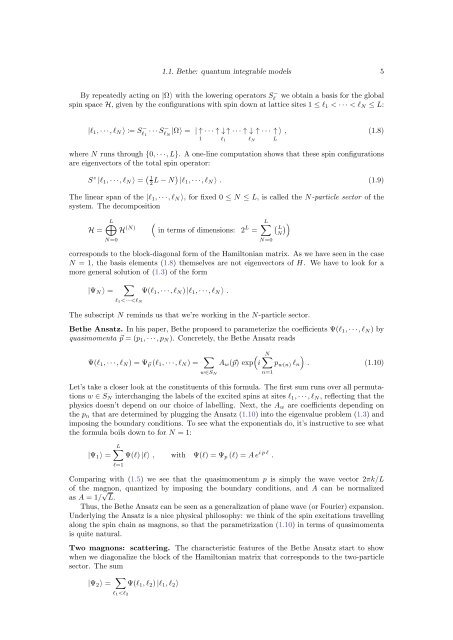The Bethe/Gauge Correspondence
The Bethe/Gauge Correspondence
The Bethe/Gauge Correspondence
You also want an ePaper? Increase the reach of your titles
YUMPU automatically turns print PDFs into web optimized ePapers that Google loves.
1.1. <strong>Bethe</strong>: quantum integrable models 5By repeatedly acting on |Ω〉 with the lowering operators S − lwe obtain a basis for the globalspin space H, given by the configurations with spin down at lattice sites 1 ≤ l 1 < · · · < l N ≤ L:|l 1 , · · ·, l N 〉 := S − l 1· · · S − l N|Ω〉 = | ↑ · · · ↑ ↓ ↑ · · · ↑ ↓ ↑ · · · ↑1 l 1 l N L〉 , (1.8)where N runs through {0, · · ·, L}. A one-line computation shows that these spin configurationsare eigenvectors of the total spin operator:S z |l 1 , · · ·, l N 〉 = ( 12 L − N) |l 1 , · · ·, l N 〉 . (1.9)<strong>The</strong> linear span of the |l 1 , · · ·, l N 〉, for fixed 0 ≤ N ≤ L, is called the N-particle sector of thesystem. <strong>The</strong> decompositionH =L⊕ (H (N) in terms of dimensions: 2 L =N=0L∑ ( LN) )corresponds to the block-diagonal form of the Hamiltonian matrix. As we have seen in the caseN = 1, the basis elements (1.8) themselves are not eigenvectors of H. We have to look for amore general solution of (1.3) of the form|Ψ N 〉 = ∑l 1
















